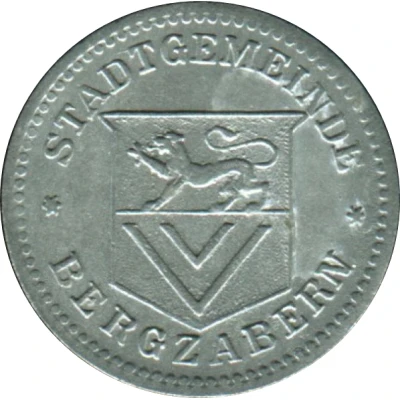


© derfnumismatics
5 Pfennigs - Bergzabern
1917 year| Zinc | 1.37 g | 18.0 mm |
| Issuer | City of Bergzabern (Federal state of Bavaria) |
|---|---|
| Emperor | William II (Wilhelm II) (1888-1918) |
| Type | Standard circulation coin |
| Year | 1917 |
| Value | 5 Pfennigs (5 Pfennige) (0.05) |
| Currency | Mark (1914-1924) |
| Composition | Zinc |
| Weight | 1.37 g |
| Diameter | 18.0 mm |
| Thickness | 0.93 mm |
| Shape | Round |
| Technique | Milled |
| Orientation | Medal alignment ↑↑ |
| Demonetized | Yes |
| Updated | 2024-10-04 |
| Numista | N#65645 |
|---|---|
| Rarity index | 73% |
Reverse
Legend and date surrounding denomination centered
Script: Latin
Lettering:
KRIEGS - NOTMÜNZE
5
✭ 1917 ✭
Edge
Plain
Comment
Issuing authority: [Stadt, Pfalz]Interesting fact
The 5 Pfennigs - Bergzabern 1917 coin from the City of Bergzabern in the Federal state of Bavaria, made of Zinc and weighing 1.37g, is interesting because it was issued during a time of economic and political turmoil in Germany. The coin was minted in 1917, during World War I, when the country was experiencing severe economic difficulties, including inflation and a shortage of metals. As a result, the German government was forced to use alternative metals, such as zinc, to produce coins. This coin is a rare example of a coin made from a non-precious metal during this time period, and its issuance reflects the resourcefulness and resilience of the German people during a period of great challenge.